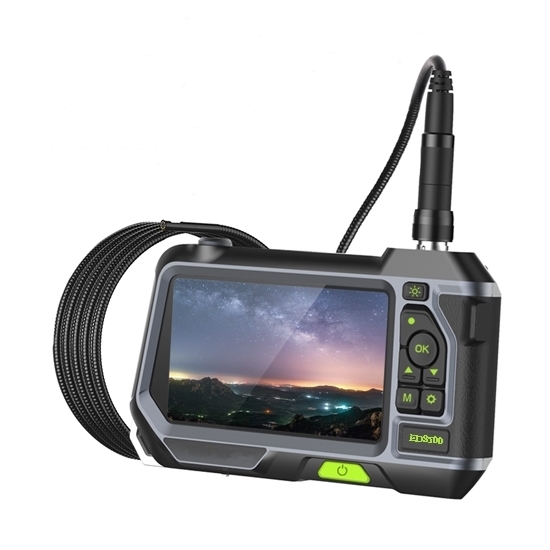How to Select an Industrial Endoscope?
The industrial endoscope plays an important role in the industrial inspection. As the development of technology, the industrial endoscope is used widely because the manufacturer pursues quality inspection and intact testing. There are various industrial endoscopes, and different kinds of endoscopes are used on different fields, such as petrochemical industry, aviation, and industrial machinery, etc. However, how to select an industrial endoscope?
Different kinds of industrial endoscopes have different range of application. Usually an industrial borescope should be selected according to the position of inspected objects. Ths selection of the industrial endoscope is based on following factors. In the following, ATO store will talk something about how to choose industrial endoscope.

- The reflectivity of light. For the surface of dark objects coated with paint, it has poor reflectivity of light. Therefore, the industrial endoscope needs stronger lighting performance to get the best image of inspected objects.
- The size of the object entrance. Check the size of the object entrance and judge if it limits the size of borescope mirror tube diameter (or working diameter). Some endoscopes with small diameter can reach into extremely narrow areas, such as a simple video detector with a small hole, an industrial endoscope for crack inspection, an electronic video industrial endoscope and so on. ATO provides 3.5" LCD industrial endoscope and 5" LCD industrial endoscope. In addition, the mirror tube diameter from 2.2mm to 23mm can be made to order, and it provides 0°angle or 90°angle to be chosen. The length of the cable can be made to order as well.
- Approach path of the inspection point. If the approach path of the inspection point is straight, the rigid endoscope is more suitable for inspection. If the approach path of the inspection point is winding, the flexible endoscope or electronic image endoscope should be chosen. For example, a small diameter flexible endoscope can be bent arbitrarily, which can reach into an aperture with small diameter to 6mm. Through the industrial endoscope, quipment wears, welds, and component loosening can be fast diagnosed. Many invisible places can be tested, such as baffle back, inside the motor, internal piping and so on.
- The position of the object entrance. The objection lens of borescope must be close to the position of the inspection point to carry out the inspection work. The position of the object entrance will decide the observation direction of endoscope, approach path and the choice of cable length.
- Distance between the objection lens and the inspected object. Whatever using standard or high strength light sources, distance between the objection lens and the inspected object will direct influence the demand of lighting. Moreover, the objection lens needs the best angle to get better image resolution and maximum magnification.
- Defects size. Different defects of the inspected object have different sizes, such as a slight crack likes hair and a large damage crack. The size of defects is important reference factors to choose the magnification, visual angle, focusing and lens resolution, which gets the appropriate and clear defect image.
- Outline of the inspected object. Outline of the inspected object is one of an important factors to determine the visual angle and light source, including the object itself, cracks, and deformation parts. Inspected in the pipeline, the environment is darkness and insufficient light. If the inspected object is in the deeper inspection area, it needs an endoscope with ceramic LED lighting or rear optical fiber lighting.

